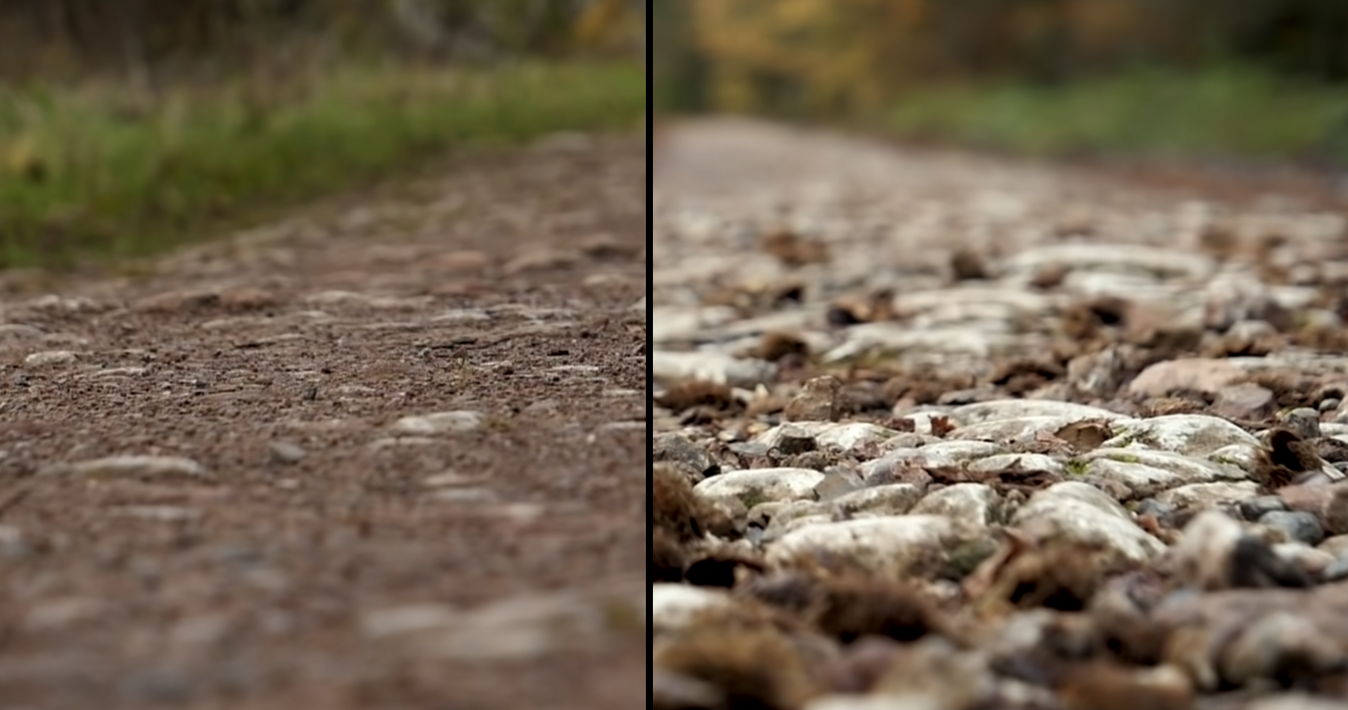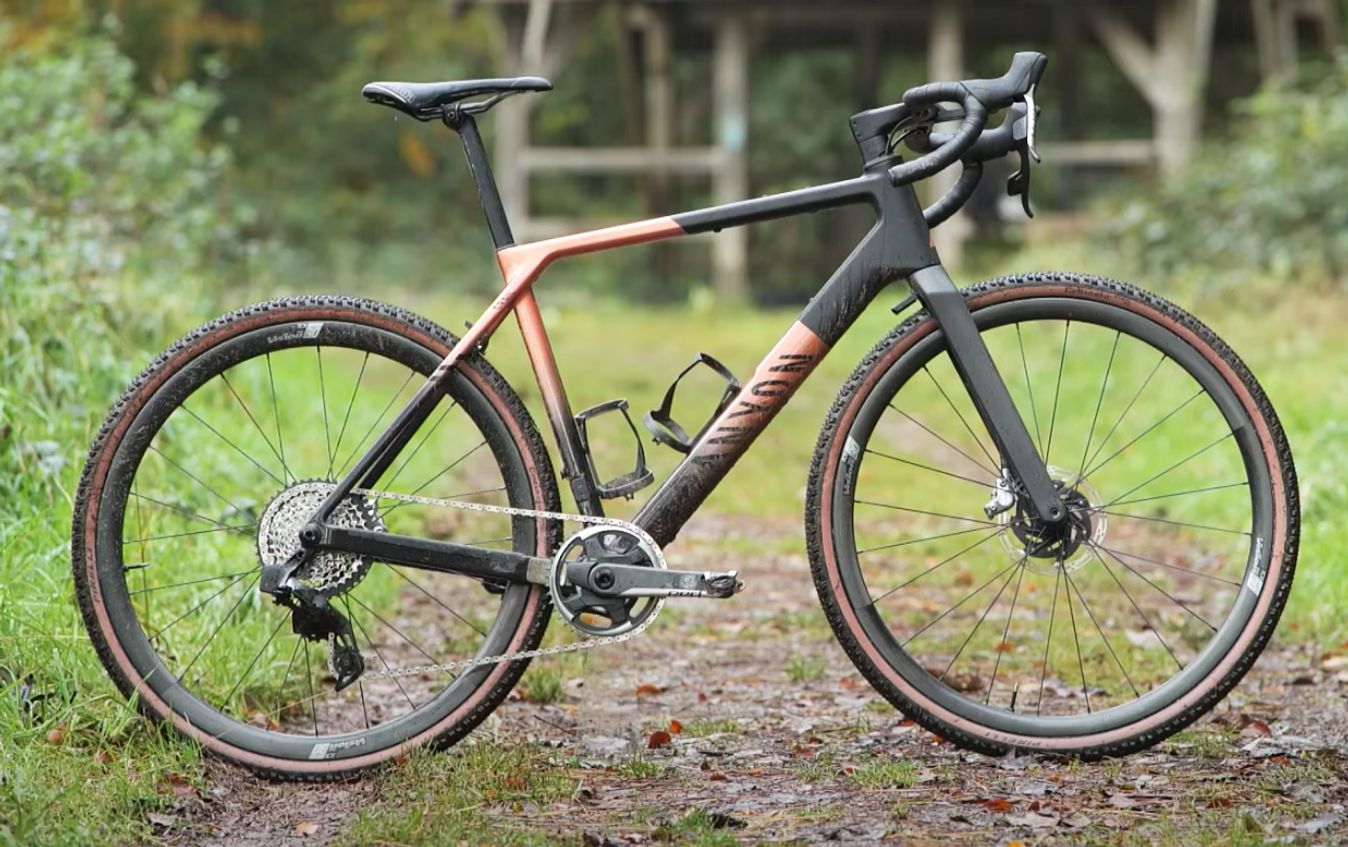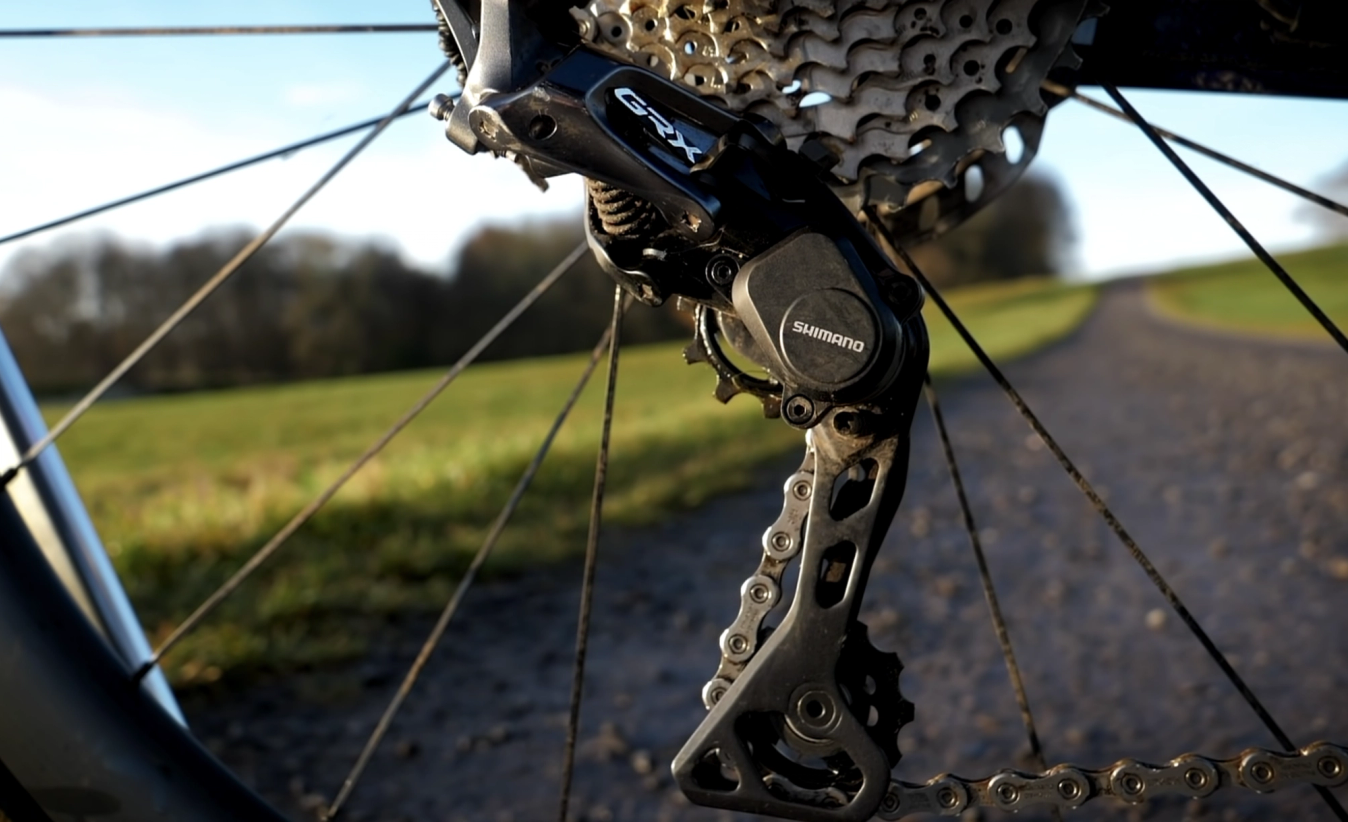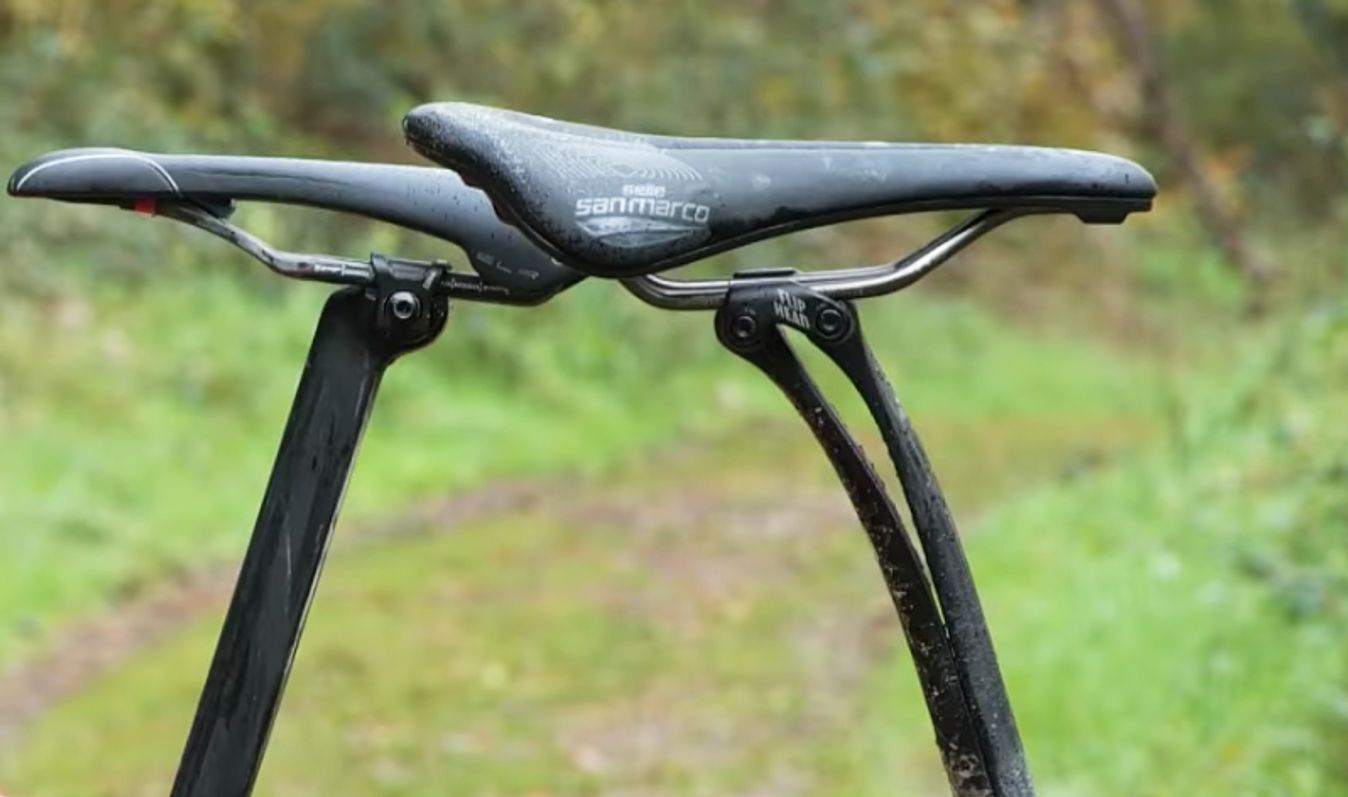How to choose a new gravel bike
It all comes down to 'the spectrum of gravel', as we take you through gearing, geometry, clearance, compliance and more
James Howell-Jones
Junior Writer
So, you're thinking of buying a new gravel bike. Deciding which one to get can be a difficult decision because there are a lot of different types. To help, we got together with Shimano to put together this guide.
Once you understand just a few key points, the whole thing begins to make sense, and you'll be able to choose the right bike for you. Plus, it doesn't matter what your budget is; the principles remain the same.
Here are our top tips and things to consider when choosing your next gravel bike.
Read more: How to buy your first road bike
The spectrum of gravel

© GCN
Gravel ranges from smooth, packed earth to loose rocks
Let us introduce you to the spectrum. Some gravel riding is basically just road riding but browner, and some gravel is not gravel at all – it's actually just mountain biking. So, the spectrum, then, is the spread of all the terrains and surfaces that span road to mountain bike.
It's relevant because, while gravel bikes are great do-it-all bikes, some perform better at one end of the spectrum than the other. The key is to find a gravel bike that best suits the terrain you're most likely to be riding.
Happily, most gravel bikes fall somewhere in the middle of this spectrum, but how do you know what to look for? Here are some pointers.
Tyre clearance

© GCN
Tyre clearance is about how much room there is in the frame and fork for tyres
Firstly, tyre clearance. Tyre size is probably the biggest factor governing a bike's ability on different surfaces. Some gravel bikes have clearance restricted to about 35mm, whereas others will allow you to fit tyres up to and in excess of 50mm, which is getting into mountain bike territory. The tyre itself is easy to swap, but the clearance your frame allows for is fixed, so it's an important thing to note when choosing a gravel bike.
A 40mm tyre will be wide enough for you to ride over even the roughest gravel surfaces, but you might find that on really rough and long days out in the saddle, you might want an even wider tire than that, just to add a little bit more comfort. A wider tyre allows you to run lower tyre pressure, plus you're also able to relax a little bit more when you're going faster on rougher terrain because there's much less chance of you puncturing and dinging your wheels.
Some gravel bikes actually have a bit of a party trick in that you can fit smaller diameter 650b wheels and then correspondingly much fatter tyres, and that really does add to their versatility. But to do that, you've obviously got to buy two pairs of wheels.
Basically, more tyre clearance means more versatility, but there is a trade-off, and that is that less tyre clearance can mean that a bike feels a little bit more zippy, a little bit more like a road bike, but a road bike on steroids, and that doesn't sound like a bad thing.
Read more: If wider road bike tyres are better, why not go super wide?
Riding position and geometry

© GCN
The new Canyon Grail
Linked to that 'road bike feel' is the position the bike puts you, the rider, in. A road bike tends to be long and low, with your upper body leaned forward over the bars and your shoulders low. It's a fast position, which makes you more aerodynamic, but for longer or even multi-day rides, it's better to be a little more upright. To achieve that, you might want the distance between the bars and the saddle to be a little shorter, and for the bars to be a bit higher up.
On rough terrain, a shorter bike with higher handlebars will give you far more control. Look closely at different gravel bikes, and you'll see that the geometry, and subsequently the riding position, is different depending on which end of the spectrum they're designed to tackle.
Some will be fast and racey, with long and low geometry almost like a road bike. Others will be slow and relaxed, and confidence-inspiring on rough terrain.
To find out which is which, you need to compare geometry charts, which you can find on the web page for any bike that you're interested in. First of all, find the right size for you, then look for the reach and stack numbers. These will tell you how far forward and how high the front of the bike will be, and they're the single best measurement on the bike because, while you can always adjust your saddle height and position, if your handlebars are in the wrong place, there isn't much room for adjustment.
To compare the geometry of different bikes alongside each other, use geometrygeeks.bike, a website that allows you to compare the geometry of any bike you can think of.
Gearing and components

© GCN
Shimano's GRX derailleurs feature a clutch
Alongside body position, geometry and tyre size, the gearing and components we put on a gravel bike influence where it sits on that gravel spectrum. Not long ago, gravel bikes just had road groupsets, and that was fine. With a compact gear ratio, you could get some fairly low gears for steep off-road climbing. While gravel groupsets are widely available now, some gravel riders still choose road gears, so it's fair to say that you don't need anything specific.
Then again, we'd say that disc brakes are essential. They give you predictable, consistent braking no matter what the road surface or the weather conditions. And also, they don't restrict tyre width – just ask fat bikers.
Not all disc brakes are built the same, though, and the difference between hydraulic disc brakes and cable-actuated disc brakes is vast. So, if there was ever anything to stretch your budget for, then going for hydraulic disc brakes as opposed to cable-actuated disc brakes would be it. They give you more power, more modulation, and more ability to withstand bad conditions. So, if you can afford it, do it.
1x vs 2x

© GCN
1x is simpler, lighter, and cleaner looking, but the jumps between gears can be large
There have been several other advances in recent years, not least the choice between two-by drivetrains and one-by. We've gone into the advantages of 1x vs 2x in this guide, but in a nutshell, 1x drivetrains look a lot cleaner and tend to be a little bit lighter. You can also still get a really wide spread of gears, but if you do choose wide ratios, you will get larger jumps between them. Now, this isn't a problem off-road, but it's something that does frustrate some people on the road.
2x, meanwhile, gives you the ability to have wider gear ratios and smaller jumps between them. But bear in mind that on a standard road groupset, the front derailleur puts a restriction on the maximum tyre width. On GRX, Shimano have bumped up that maximum to 42 millimetres, but remember that if you want to fit really wide tyres on your gravel bike, you are going to need 1x.
Another point to look out for, if budget allows, is to get a rear derailleur with a clutch. A clutch basically keeps holding your chain tight, so it doesn't bounce around on rough terrain. With a 1x setup, a clutch and a one-by-specific chainring are important to keep the chain on. On a 2x drivetrain, a clutch isn't essential, but it's still desirable because it makes your bike so much quieter over rough terrain. That might not mean you go any faster, but it'll make riding more enjoyable.
Then there's gear ratios. It might sound boring, but it's another factor that influences where a gravel bike sits on that spectrum. If you plan on spending most of your time doing the smoother end of the gravel spectrum, then it's better to choose gear ratios that are optimised for faster riding.
However, don't get too hung up about your maximum gear ratio. Yes, if you're racing, you don't want to get dropped on the descents because you can't pedal fast enough, but in the real world, there aren't that many occasions where we want to keep pedalling beyond about 60kph.
Far more important is to get low enough gears to tackle steep, technical climbs. If you're going to use your gravel bike for bikepacking, it's even more important. With your bike loaded with bags, easier gears will allow you to keep pedalling when otherwise you'd be off and pushing.
Read more: 1x vs 2x groupsets: which is best for your gravel bike?
Material

© GCN
Canyon make aluminium and carbon versions of their gravel bikes
Now for frame material. Should you go for carbon, aluminium, steel, or even magnesium?
On a budget, aluminium is great. It's light, stiff and robust. It doesn't corrode, and it can be formed into amazing flowing shapes.
Steel is significantly heavier, but it has a lot of fans. Partly for its image, and partly for the way it actually feels to ride. Although bear in mind that that 'steel feel' only starts to kick in when you spend a bit more money.
Carbon fibre is super light, or it can be, anyway, plus you can do more to the material to really tailor it, either through more comfort, more compliance or more stiffness.
Then you have titanium, which is amazing, but it's a little bit heavier, and a little bit more expensive.
Finally, far less common is magnesium, which is new to the market, although there were a couple of magnesium bikes around a few decades ago. It's a little bit unproven, although it does have some really impressive environmental credentials.
Really though, frame material isn't half as important as all the other things we've considered in this guide.
Compliance

© GCN
Canyon's split seatpost and D-shaped post, both of which provide compliance
One of the great gravel bike traits is the increased comfort that comes from the wider tyres, but a lot of manufacturers boast comfort-boosting measures either built into the frame or the components. For example, the split seatpost Canyon uses on its Grizl gravel bike to increase compliance.
Compliance knocks the edge off rough roads, but don't confuse it with suspension, which is also a thing. Some gravel bikes are available with a suspension fork, and in some very rare cases, with full suspension.
Bosses or mounting points

© GCN
Fork mounting points on the Canyon Grizl
One last thing to look out for are bosses, which are little bolts all over the bike that allow you to attach extra stuff. It could be for extra water, or it could be for attaching luggage to your bike, especially with old-school pannier racks. Additionally, there might be some bosses for attaching mudguards or fenders.
We don't think this is essential, since modern bikepacking bags are generally attached with straps rather than bolts, and clip-on mudguards are widely available. However, if you want a 'Swiss army knife' bike that you can use for all kinds of different things, or if you're getting a bike to ride around the world, extra bosses are worth looking out for.
Read more: Gravel vs road: how much slower is a gravel bike?
So which is best?
We haven't tried to tell you what the best gravel bike in the world is, because as you can see, that depends on you, and on what kind of riding you want to do. But now, you've got the knowledge you need to make that decision for yourself, and to work out where any given gravel bike sits on that spectrum.
To recap, look at tyre volume and geometry, but think about the groupset as well. Frame material isn't the end of the world, but think about those little extras, like compliance features, and bosses for mounting all of your worldly possessions to your bike.
For more advice about tech, components and buying bikes, head to our Buying Advice section.












